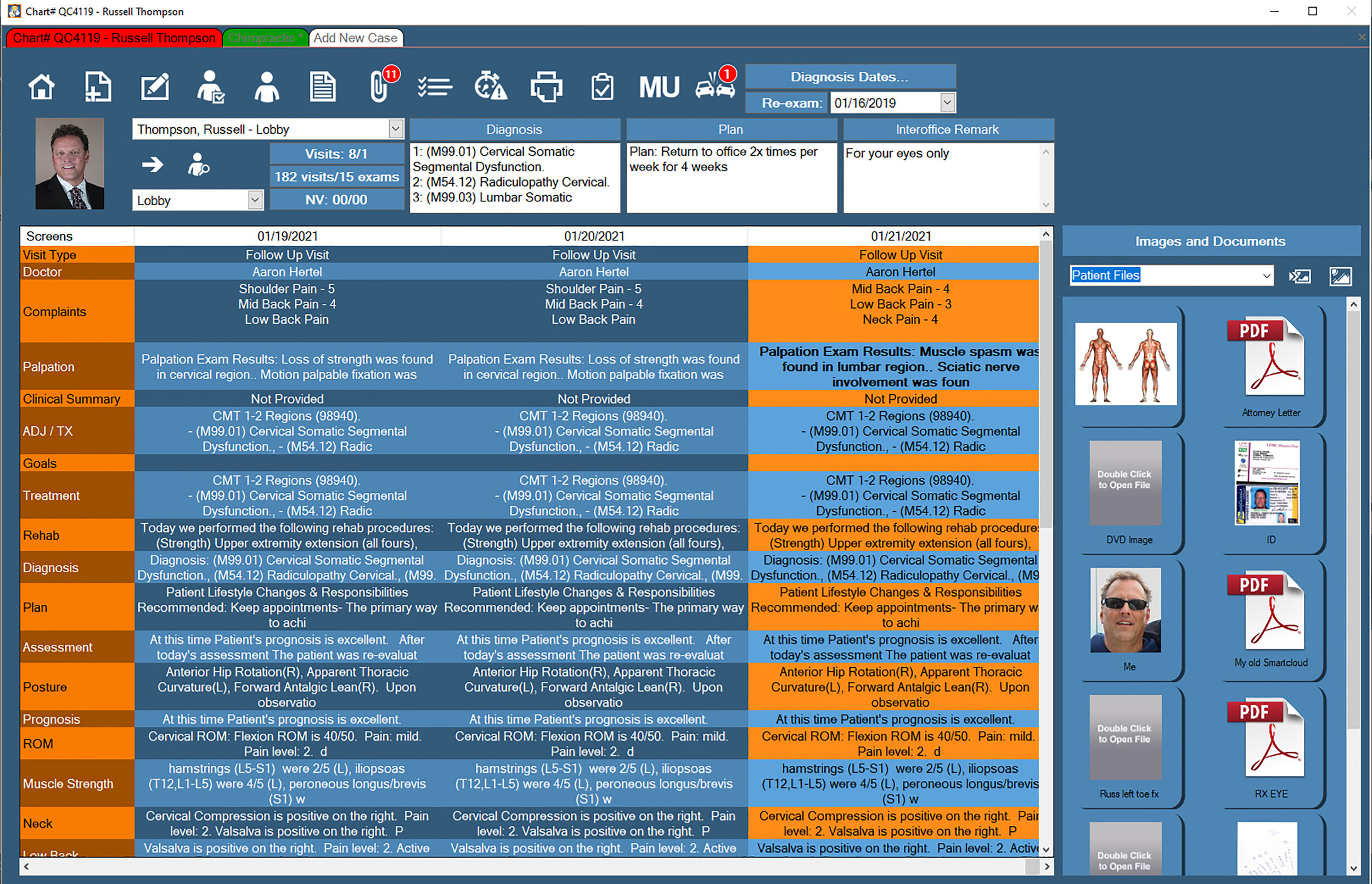The healthcare industry has undergone a significant transformation over the past few decades, and chiropractic practices are no exception. The evolution from paper-based records to sophisticated chiropractic software has revolutionized how chiropractors manage their practices and deliver patient care. This article explores the journey of chiropractic software, highlighting the key advancements and benefits that have shaped modern chiropractic practice.
The Early Days: Paper-Based Records
Before the advent of chiropractic software, chiropractors relied heavily on paper-based records to manage patient information. This manual system had several limitations:
- Time-Consuming: Recording and retrieving patient information manually was labor-intensive and time-consuming.
- Error-Prone: Paper records were susceptible to human error, including misfiling and incomplete documentation.
- Storage Issues: Managing and storing large volumes of paper records required significant physical space and was often cumbersome.

Despite these challenges, paper-based records were the norm for many years, primarily due to the lack of available technology to streamline these processes.
The Introduction of Basic Computer Systems
The late 20th century saw the introduction of basic computer systems in chiropractic practices. These early systems were primarily used for billing and scheduling but represented a significant step forward from paper records. Key features included:
- Digital Scheduling: Early computer systems allowed chiropractors to schedule appointments electronically, reducing scheduling errors and improving efficiency.
- Billing Software: Basic billing software automated some aspects of the billing process, helping practices manage their finances more effectively.
While these systems improved certain aspects of practice management, they were still limited in functionality and integration.
The Emergence of Comprehensive Chiropractic Software
The early 2000s marked the beginning of a new era in chiropractic practice management with the emergence of comprehensive chiropractic software solutions. These systems integrated multiple functions, including:
- Electronic Health Records (EHR): Comprehensive EHR systems replaced paper records, enabling chiropractors to store, retrieve, and update patient information digitally.
- Practice Management Tools: Advanced features such as patient scheduling, billing, and claims management were integrated into a single platform, streamlining administrative tasks.
- Patient Communication: Patient portals allowed for improved communication between chiropractors and patients, enhancing patient engagement and satisfaction.
These advancements significantly reduced the administrative burden on chiropractic practices and improved overall efficiency.

The Rise of Cloud-Based Solutions
As technology continued to evolve, cloud-based chiropractic software solutions emerged, offering several advantages over traditional on-premise systems:
- Accessibility: Cloud-based systems can be accessed from any device with an internet connection, allowing chiropractors to manage their practices remotely.
- Scalability: These solutions can easily scale to accommodate the needs of growing practices, ensuring that chiropractors can manage increasing patient volumes without compromising on service quality.
- Cost-Effectiveness: Cloud-based software reduces the need for expensive hardware and IT infrastructure, making it a more affordable option for many practices.
The adoption of cloud-based chiropractic software has further streamlined practice management and improved the flexibility and scalability of chiropractic practices.
The Future of Chiropractic Software
The future of chiropractic software looks promising, with ongoing advancements poised to further enhance practice management and patient care. Some key trends to watch include:
- Artificial Intelligence (AI): AI-powered tools can analyze patient data to provide insights into treatment outcomes, helping chiropractors make more informed decisions.
- Telehealth Integration: The integration of telehealth capabilities into chiropractic software allows for virtual consultations, expanding access to care and improving patient convenience.
- Enhanced Data Security: As cybersecurity threats continue to evolve, chiropractic software will incorporate more advanced security features to protect patient data and ensure compliance with regulations.
These innovations will continue to drive the evolution of chiropractic software, ensuring that chiropractors can deliver the highest quality care to their patients.
The evolution of chiropractic software from paper-based records to advanced digital solutions has transformed how chiropractic practices operate. Modern chiropractic software streamlines administrative tasks, enhances patient care, and improves practice efficiency. As technology continues to advance, chiropractic software will play an increasingly vital role in the success of chiropractic practices.
For a cutting-edge, user-friendly chiropractic software solution, explore Chiro Quick Charts. Our comprehensive software is designed to meet the unique needs of chiropractic practices, offering all the essential features to help you succeed. Try our free trial today and experience the benefits firsthand!
Empower your practice! Get a Free Demo Today!
Experience the power of a personalized demo with our expert software developer. Discover how Quick Charts can revolutionize your chiropractic practice with its seamless integration of cutting-edge technology. From simplified patient management to advanced analytics, our software empowers you to take your practice to new heights. Don’t miss out on the opportunity to see firsthand how Quick Charts can transform your workflow and enhance patient care. Schedule your demo today.
Find out more about our Free Trial
"*" indicates required fields

